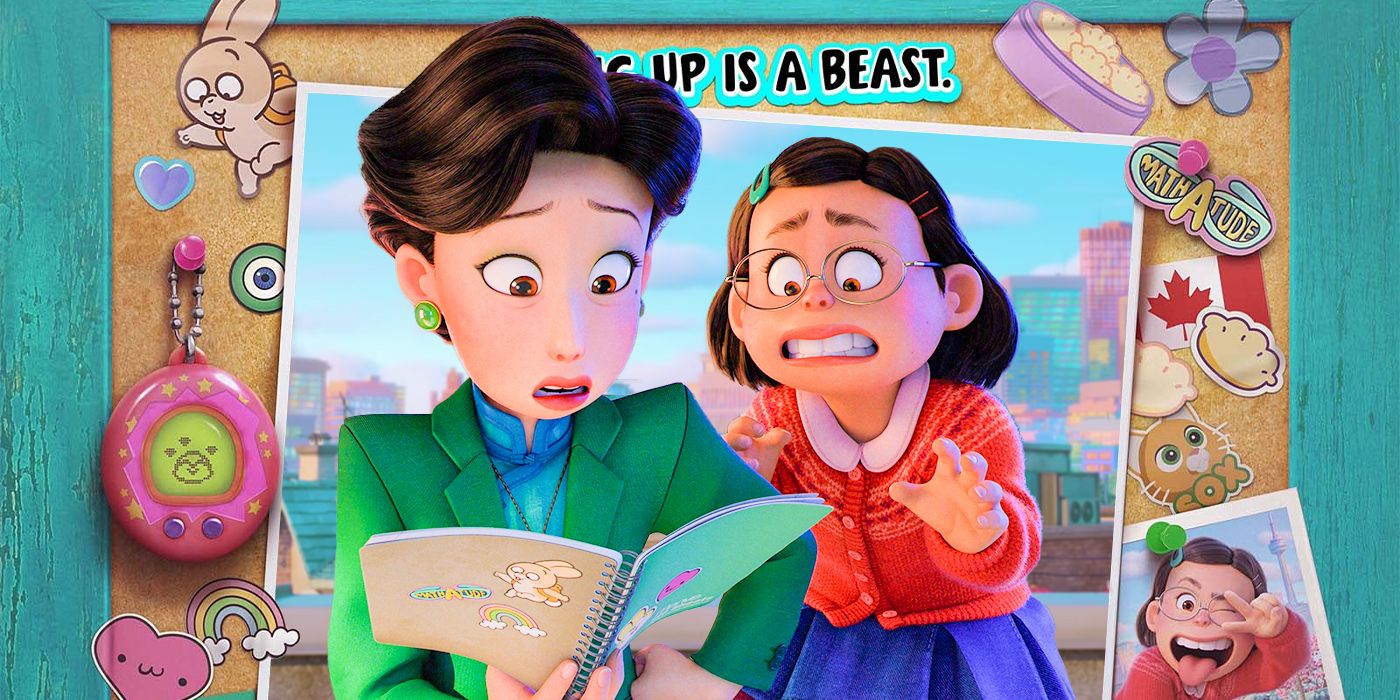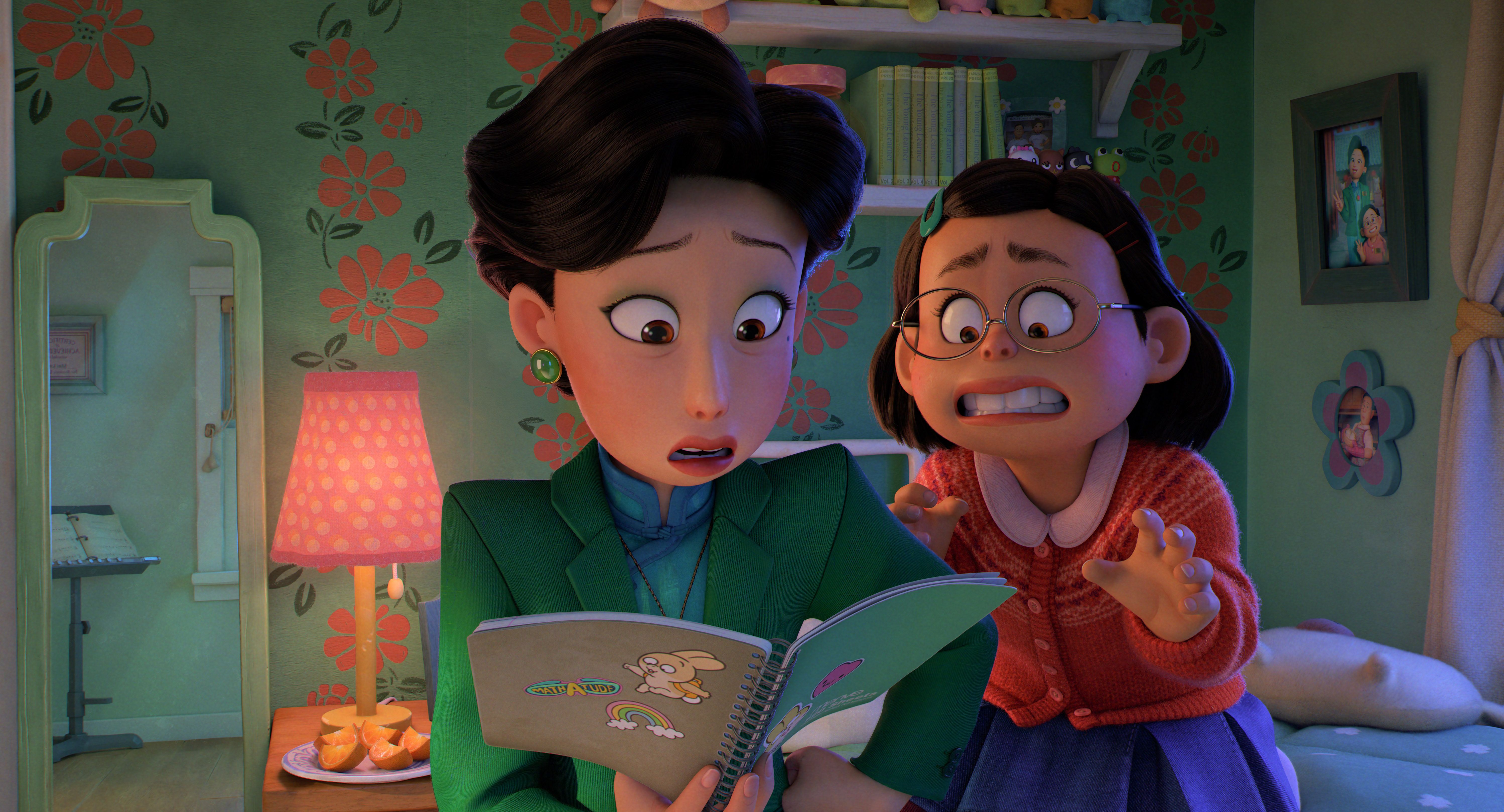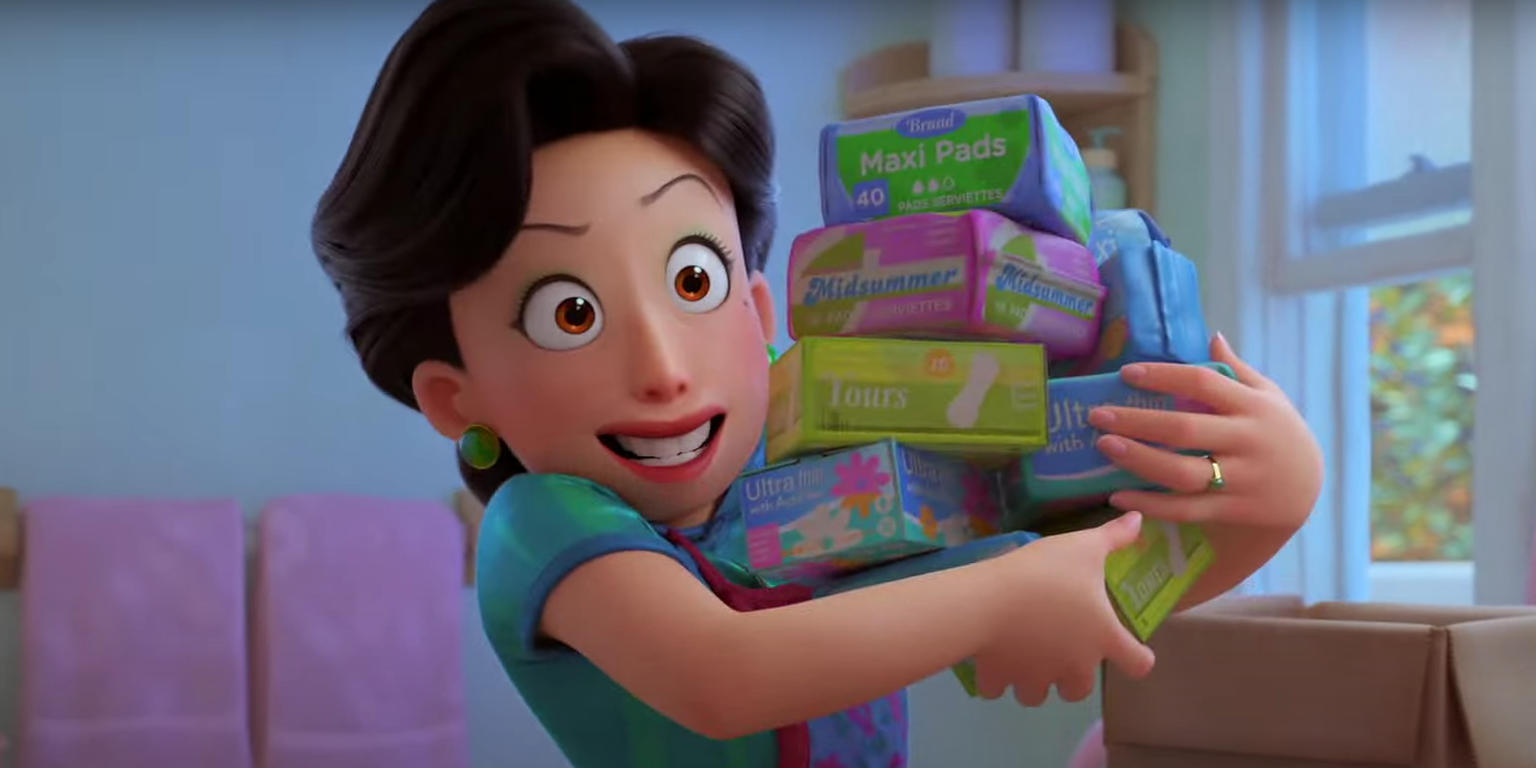Mother-daughter relationships are one of the less explored dynamics in children’s films. Plenty of films highlight the relationship between dads and their kids, whether that be in classics like Finding Nemo or recent hits like The Mitchells vs. the Machines. Dads have a plethora of films exploring their trials and tribulations through film, but moms have taken a bit of a backseat as ongoing jokes about dead moms for Disney princesses continue to persist. But Pixar’s film Turning Red not only takes the mother-daughter dynamic to center stage, it makes it shine.
Turning Red follows Meilin Lee (portrayed by Rosalie Chiang), a 13-year-old girl who discovers that she can turn into a giant red panda. After freaking out and rampaging across Toronto, Mei’s mother, Ming (portrayed by Sandra Oh) explains that the curse of the red panda has been passed down through the women in their family for generations. The curse can be sealed away in an amulet during a ritual performed on the night of a red moon and Mei would be able to resume her normal life as all of her female relatives up until this point have done. Mei is quick to agree to this but over the course of the film, with the support of her friends, Mei begins to question if sealing the panda away is the right choice. This decision, along with her secretly using her powers with her friends, causes a rift to form between Mei and her mother. A rift that’s resolved in a heartwarming but realistic way at the climax of the film.
Editor's Note: The following contains spoilers for the film, Turning Red.
To call the relationship between Mei and Ming the heart of Turning Red would not be an overstatement. Where the film could have gone with the simple overbearing mother trope we’ve seen a hundred times and called it a day, they instead decided to showcase a mother-daughter relationship that feels dynamic and true.
From the start of the film, it’s clear that Mei loves her mother very much and that Ming cares for her daughter just as deeply. When Mei has to leave her friends early at the start of the film to help her mother run the temple, she’s not at all resentful. She tells her friends that she likes helping, and we see through montage how Mei and Ming work in harmony to lead tours and take care of the temple. And beyond that we see Mei and her mother bond watching a period drama together, making catty remarks about the characters with each other and having a genuinely nice time together. This is only interrupted when an ad for 4*Town, a boy band Mei and her friends love, comes on the television and Ming expresses distaste for both the boys and Mei’s friends.
This careful work at the start of the film is the solid foundation that makes their relationship work so well throughout the film. Before the audience is shown where the cracks will inevitably form between them, we see how strong their bond is and how much they care for each other. It makes everything that comes after more bearable because even as we see Ming act in hilariously and embarrassingly overbearing ways, we understand it comes from a place of care rather than a sense of control.
The relationship between Mei and Ming, like between any mother and daughter, is complicated and over the course of the film it becomes fraught. Mei feels the heavy weight of her mother's expectations for her, expectations she’d been happy to meet for the longest time. Getting good grades, hanging out with people her mother approved of, and not keeping secrets, were all things both Mei and her mother took for granted. But with this new power, Mei is for the first time torn in two directions. On the one side, her mother and the comfort of everything she knows. The safety that comes from doing what is expected of her. On the other, her friends and the boundless support they show for her coming into her own. The choice to become someone new.
At first, Mei is looking forward to the ritual to banish the red panda, but after her friends discover 4*Town is coming to Toronto (and that people at their school really like Panda Mei) they start a secret business selling red panda merch to raise funds for tickets. This allows Mei to get more used to her powers and see how they don’t only have to be a source of fear for her or anyone else. But to keep using her power Mei must go against her mother’s wishes and this begins a pattern of Mei lying to her mother. Through these actions again we see how dynamic the relationship between mother and daughter is portrayed. We see the struggle Mei holds as she sees her mother is genuinely trying to look out for her in her own way, yet still understands how stifled Mei must feel by it.
The film's climax throws Mei and Ming’s dynamic into a deluge of chaos. Ming has turned into a red panda kaiju storming the 4*Town concert to confront Mei. And Mei, amidst her mother’s destruction, finally snaps and starts unraveling the lies she’s been giving her family the whole film. Both Mei and Ming are embroiled in their anger and unable to think clearly, which leads to Ming getting knocked out. Mei becomes distraught but with the help of her friends, her family, and 4*Town, they’re able to finish the ritual as needed and help her mother seal away the red panda again. This whole sequence is a wonderful contrast to the love shown in the opening, expressing how difficult mother-daughter relationships can be. They lash out in anger when they feel they’ve been betrayed; Ming through Mei’s lies and Mei through Ming’s refusal to let her make her own choices. It’s a culmination of mutual wounds finally being addressed.
And through the storm, understanding. During the ritual, in the spirit realm, Mei finds a younger version of her mother, scared and crying. Ming had hurt her mother with her powers when she was young and so her overbearing nature was shown to come from a place of fear. Mei takes her hand and leads her to the portal that will take them back to the real world and strip away the red panda spirit. And here they finally reach an understanding. Mei decides to keep the red panda and her mother finally accepts it. It’s not perfect and both of them hold fear and hurt, but the film shows how strong their love is for each other and, crucially, that they understand it’s their own choice to make. The relationship is not fully healed, but they’ve reached a place of mutual understanding. What Turning Red nails is the understanding that mother-daughter relationships can be uniquely messy. Growing up can sometimes feel like a betrayal to one’s parents, and yet it is something we all must do.
In the end, Mei still helps her mother run the temple, but it isn’t her whole life anymore. She leaves with her friends to go make her own way. It’s not a perfect end and there’s a new sense of distance between them, but you still see the care they have for each other. We see this care expressed physically through the Tamagotchi Ming’s red panda spirit now resides in, reflecting a shift from tradition to something new. The relationship is not gone, just evolved. The mother and daughter are not inseparable nor are they estranged; it feels very true to real life. The relationship has not been ruined only changed just as Mei herself is changing.
No matter how fantastical Turning Red may get, the heart of it is in something very mundane and a bit melancholy. The mother-daughter relationship cannot stay the same forever and as hard as it can be, part of growing up is understanding that those changes, good or bad, are inevitable. The film articulates the fear associated with that as well. Mei and Ming love each other so much that they are afraid of change because they don’t want it to cause distance between them. And the film doesn’t give us a nice answer for that distance rather shows it as another somewhat sad but necessary part of growing up. The mother-daughter relationship works so well in this film because it captures the good and the bad of their relationship. They love each other and hurt each other and do so in hundreds of tiny ways but at the end of the day while their bond may change it will always be there. A mother and daughter will both inevitably change over time, sometimes in ways that bring them closer together and other times in ways that draw them apart, but they will always be united as a family so long as they are willing to work together.




